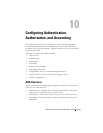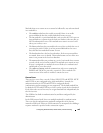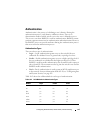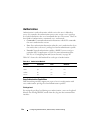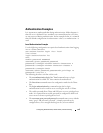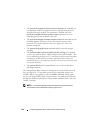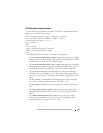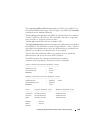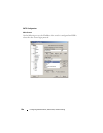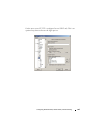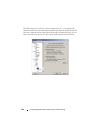
Configuring Authentication, Authorization, and Accounting 215
Authentication Examples
It is important to understand that during authentication, all that happens is
that the user is validated. If any attributes are returned from the server, they
are not processed during authentication. In the examples below, it is assumed
that the default configuration of authorization—that is, no authorization—is
used.
Local Authentication Example
Use the following configuration to require local authentication when logging
in over a Telnet connection:
aaa authentication login “loc” local
line telnet
login authentication loc
exit
enable password PaSSW0rd
username guest password password
passwords strength minimum numeric-characters 2
passwords strength minimum character-classes 4
passwords strength-check
username admin password paSS1&word2 privilege 15
passwords lock-out 3
The following describes each line of this code:
•The
aaa authentication login “loc” local
command creates a login
authentication list called “loc” that contains the method local.
•The
line telnet
command enters the configuration mode for the Telnet
line.
•The
login authentication loc
command assigns the loc login
authentication list to be used for users accessing the switch via Telnet.
• The enable password allows Telnet and SSH users access to privileged exec
mode. It is required that an enable password be configured to allow local
access users to elevate to privileged exec level.
•The
username guest password password
command creates a user with the
name “guest” and password “password”. A simple password can be
configured here, since strength-checking has not yet been enabled.



